Shower screen: features of the choice and application
While swimming around the bath or shower, water splashes and condensation accumulates on the surrounding surfaces. In order to prevent this from occurring, shower screens, doors and bath curtains are used that detain splashes, resulting in a relatively dry room after bathing.
In this article, we will look at what a modern shower screen is, how it is used for its intended purpose and what model it is advisable to choose to ensure operational comfort in the bathroom.
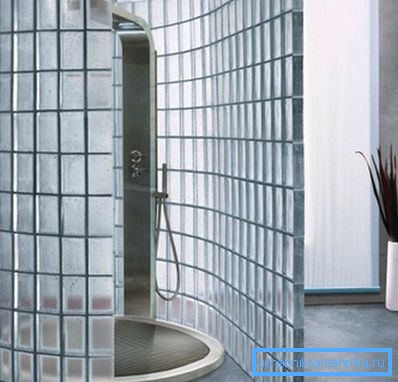
Reasons for using screens
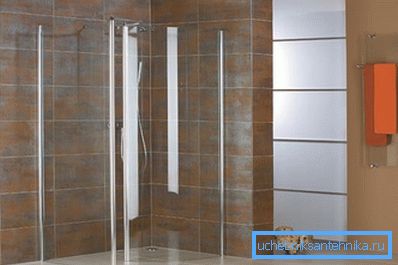
Until recently, in the combined bathrooms, to differentiate the washing area from the toilet, a thick plastic curtain was used. This solution has one obvious advantage - its price is available to many. But the synthetic curtain looks undignified and is unlikely to decorate the bathroom interior (see also the article What are these different sliding shower curtains).
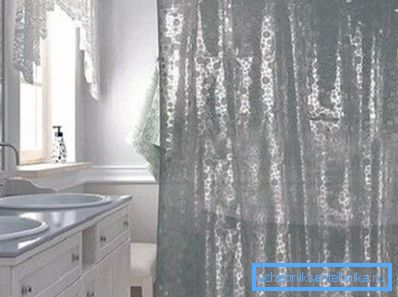
Meanwhile, it is impossible to completely abandon the use of the barrier for a number of reasons:
- First of all, in the presence of a barrier, a bathroom can be used by several people at the same time.
- In addition, if there is a fence, the water from under the shower does not fall on the surface of the washing machine, sanitary equipment or furniture in the bathroom. As a result, the resource listed items will be longer.
- Splashes from the shower will not fall on the floor. As a result, the floor will be dry and non-slip, therefore, it will be safe to walk on it even barefoot.
- The absence of excess moisture in the room will eliminate the possibility of mold and other fungal infections.
- The absence of excessive humidity in the room will have a beneficial effect on the resource for finishing walls, ceiling and floor.
Grouting interlayer patches from regular moistening is covered with microcracks and gradually collapses. Thus, access of moisture to tiled glue on which facing is kept opens. As a result, due to regular exposure to moisture tile shatters and falls off over time.
- Lack of excessive moisture on the walls ensures safety. Most bathrooms have electrical outlets on the walls, and even distribution boxes covered with plastic covers. Exceeding the permissible moisture levels leads to the formation of condensation on the walls, which in rare cases can cause a short circuit.
So, the reluctance to hang unattractive curtains is not a reason to forget about their safety and about the resource of wall and floor decoration. Instead of curtains, a stylish and aesthetically appealing glass screen for a shower or bath can be used.
General characteristics
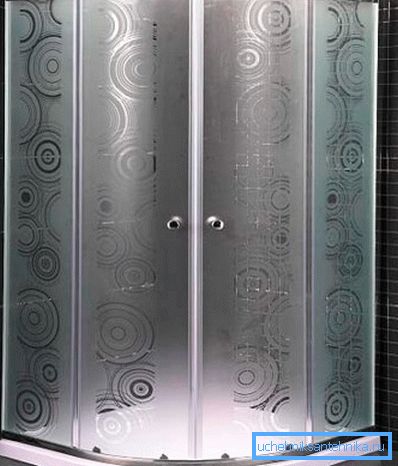
A plain or corner shower screen is a wide range of accessories made of glass or polymeric materials intended to keep the washroom from the rest of the room. The range of such fences is different not only by the type of material used in the manufacture, but also by the dimensions, installation method and features of operation.
Consider the main types of fencing for bathrooms on the market as detailed as possible.
Frame construction
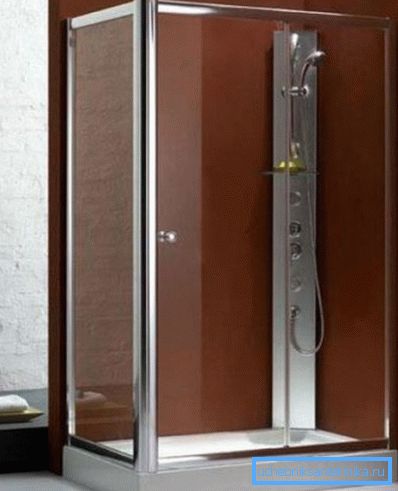
Screens of frame type are made from a metal profile in which sheet polycarbonate or tempered glass is fixed. The structure may be a single frame or it may consist of several small frames (sections).
With intensive use of the bathroom, it is advisable to use screens made of several sections. This design is assembled from side fixed walls and movable sections installed in the center. The simplest option is a sliding screen in which one central part is displaced relative to another, forming an opening in which you can freely pass.
Some modern fencing for bathroom facilities consist of a combination of polycarbonate and glass. In this case, fixed parts of the structure are made of glass, while lighter polycarbonate doors are easier to open and move.
Frameless design
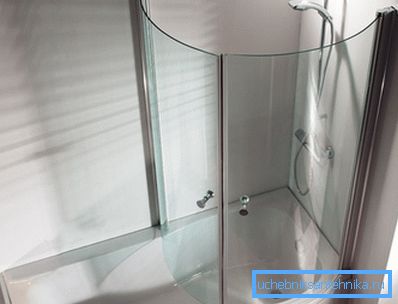
Frameless designs look an order of magnitude more attractive than frame analogs, and this is not surprising, since the sections are not enclosed in a metal frame, but are held on special hinges.
Frameless modifications of the screen are made only from special tempered glass, which is both durable and resistant to temperature changes. The only significant disadvantage of such barriers is the high price.
Bicuspid glass frameless screens are the most common. Such products with a glass thickness of up to 8 mm, not only look great, but also demonstrate high resistance to mechanical stress.
Important: Namely, frameless constructions can be used for arranging bathroom cabins that do not have a pallet.
Combined facilities
Combined modifications are structures, some of which are made of polycarbonate, and some of them are made of tempered glass. Such a decision is justified by a more affordable cost and lower weight compared to fully glass products.
Standard sizes
When purchasing a screen separately from the pallet or bath, it is important to pay attention to the conformity of the configuration of the standard sizes.
The most common sizes available for sale are:
- 150 * 90 cm;
- 120 * 85 cm;
- 110 * 85 cm;
- 100 * 100 cm;
- 90x90 without a pallet or modification with a pallet 90x90;
- 80 * 100 cm;
- 80 to 80 cm
Important: If none of the listed sizes meet your needs, a product with non-standard dimensions can be purchased on order. Of course, the price of such a screen will be slightly higher than standard products.
Features of the installation work
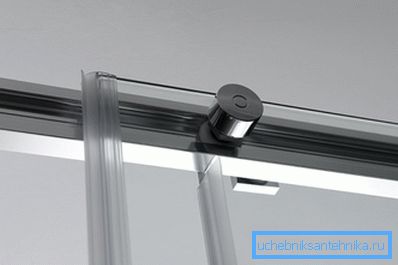
Instructions for the installation of their own hands depends on the type of purchased screen and the type of enclosed bath or shower.
In general, the instruction is as follows:
- Mark the holes on the walls for fixing the frame or special loops.
- Next in the walls we drill holes with a drill, the diameter of which corresponds to the diameter of the seal on the dowels.
- Blow out dust from the holes, gently insert the seals and hammer them in with a hammer, until they are flush with the surface of the wall.
- If the fence is additionally attached to the ceiling or to the floor, we drill similar holes in the ceiling.
- Next, set the frame or loop to the desired position and fix the dowels.
- At the final stage of installation work we insert polycarbonate sheets or glass sheets into the frame.
The situation is somewhat more complicated with the use of mounting loops. Special plastic or rubber seals are inserted into the loops, between which there is a sheet of tempered glass. Only after this, the bolts are inserted into the specially provided through holes and tightened with the required force.
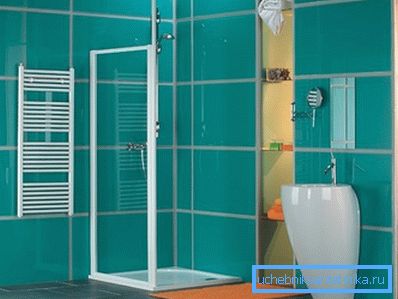
If the installation is done correctly, the glass in place of the hinge will not crack. If you forget to install a seal in the hinges or tighten the bolts with excessive force, a crack will appear.
Conclusion
So, a shower screen with your own hands can be successfully installed, and before that selected among a wide range of products on sale. Proper selection and proper installation of fencing will make your bathroom not only more functional, but also more attractive (read also the article Shower curtain - types and features of choice).